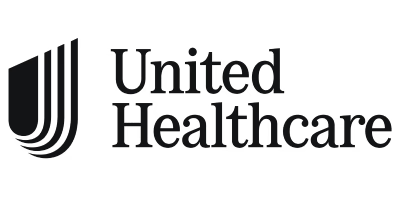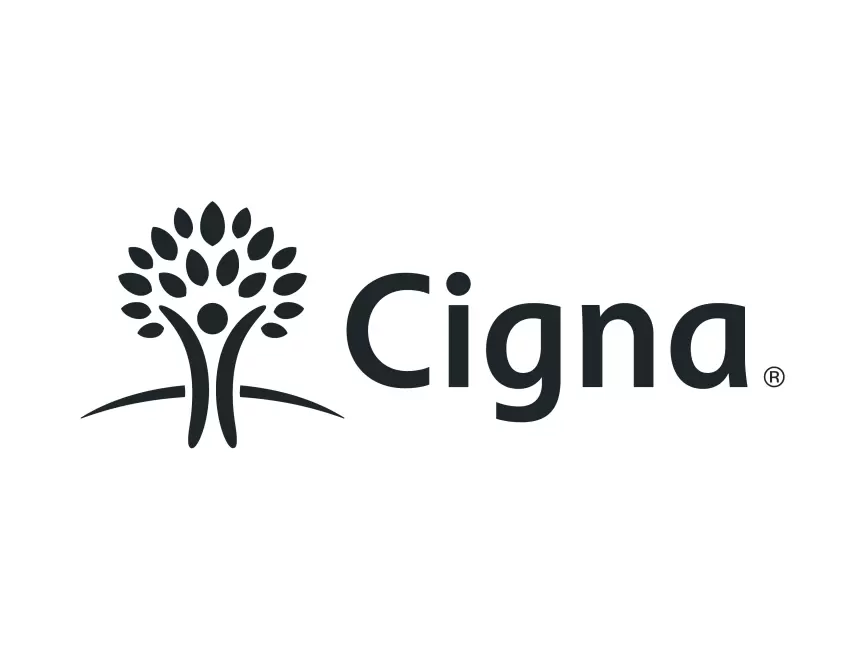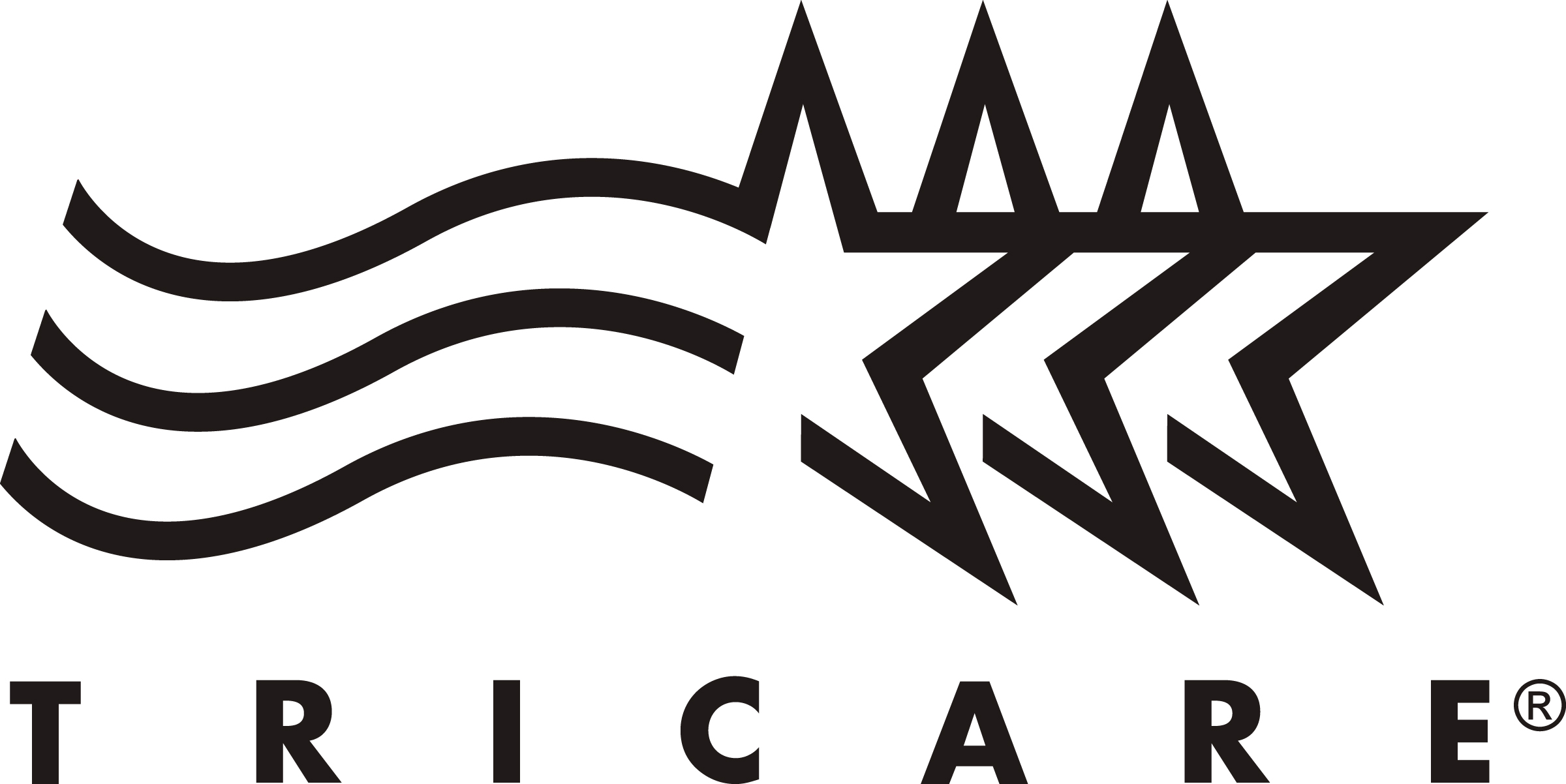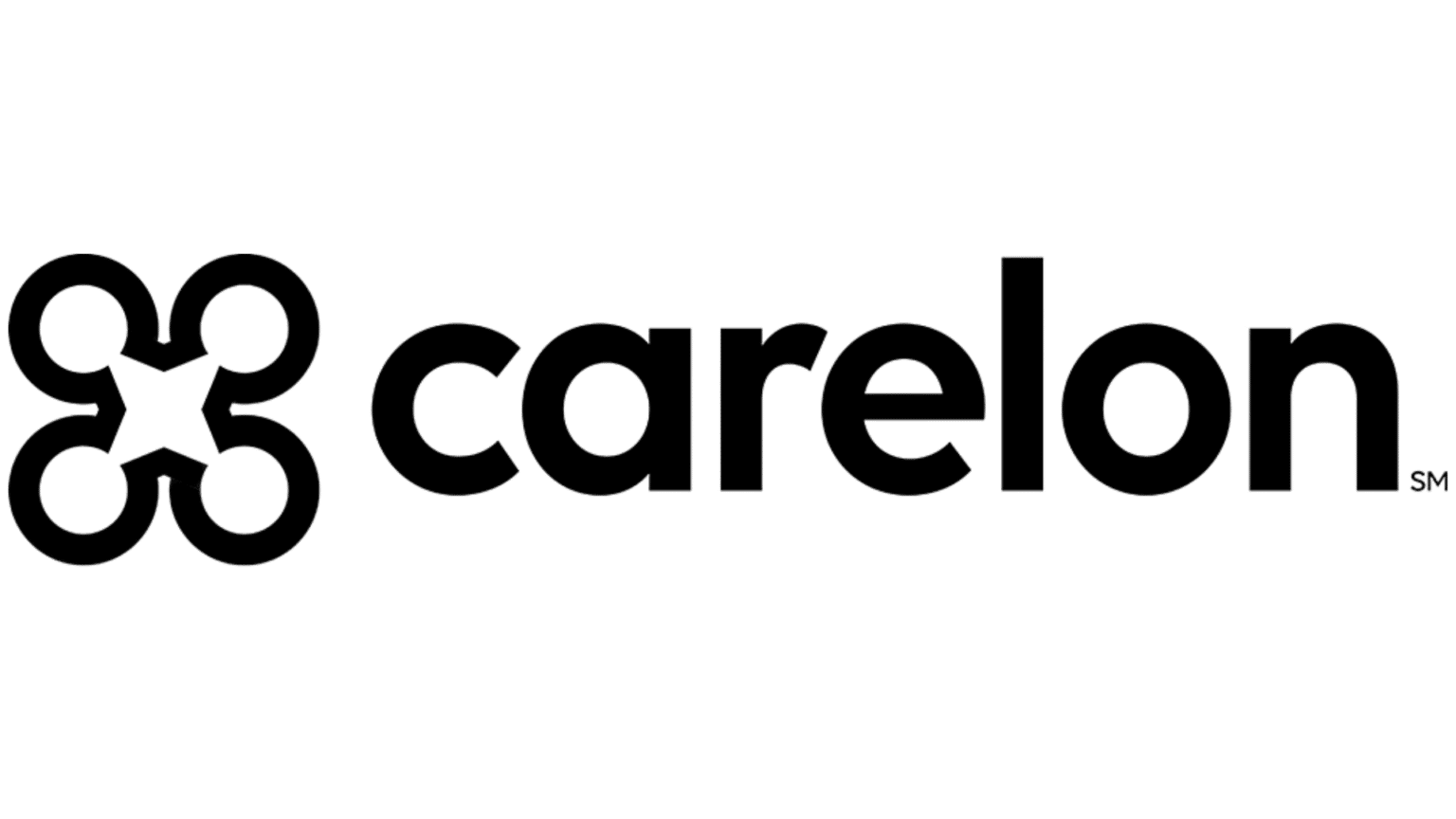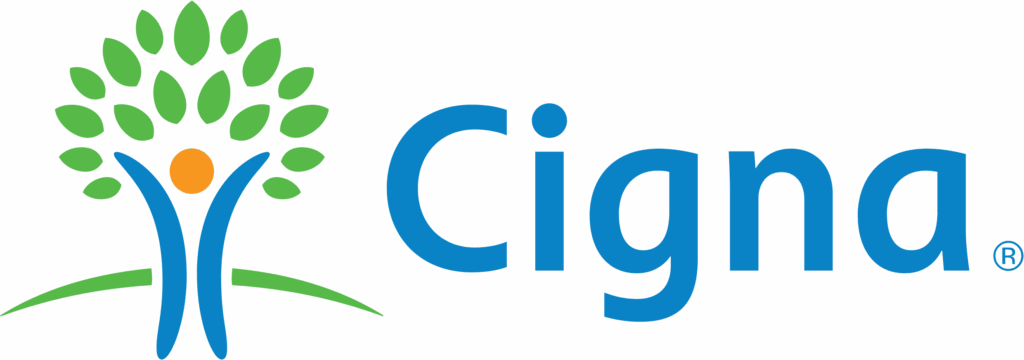Economic Factors Influencing Addiction
The intricate web of addiction is woven with many threads, and economic factors are undeniably significant among them. These are not just abstract concepts; they translate into real-life pressures that can push individuals towards substance use or make it harder to break free. The “economic impact of addiction” is a two-way street: economic hardship can fuel addiction, and addiction, in turn, can devastate an individual’s financial stability and that of their family. Understanding these dynamics is crucial for crafting effective interventions and support systems, especially in regions like the Central Valley where economic vulnerability can be pronounced.
Unemployment and its Impact on Substance Abuse
Losing a job or facing prolonged unemployment is more than just a financial blow; it’s an emotional and psychological earthquake. The loss of income is immediate and stressful, but so is the loss of routine, purpose, social connection, and identity that often comes with employment. This void can create a perfect storm for substance abuse. Individuals may turn to drugs or alcohol to cope with feelings of depression, anxiety, boredom, or hopelessness. The keyword “Unemployment and substance abuse” highlights a well-documented correlation. When jobs are scarce, or industries face downturns, communities often see a rise in substance-related issues. The stress of job searching, repeated rejections, and the uncertainty of the future can exacerbate existing mental health conditions, making self-medication with substances a seemingly accessible, albeit dangerous, coping mechanism. For those already in recovery, job loss can be a significant trigger for relapse. The structure and sense of contribution that employment provides are often key components of a stable recovery. Addressing unemployment, therefore, is not just an economic issue but a public health one, deeply intertwined with addiction prevention and recovery. If you’re struggling with unemployment and its impact on your well-being or substance use, know that support is available. Exploring treatment options, such as a Virtual IOP Program, can provide coping strategies and a supportive community without adding the stress of daily travel to a treatment center.
Poverty Levels and Access to Addiction Treatment
Poverty creates a formidable barrier to accessing essential services, and addiction treatment is no exception. Individuals living in poverty often lack adequate health insurance, or any insurance at all, making the cost of rehab prohibitive. Even when low-cost options exist, ancillary costs like transportation, childcare, or taking time off from hourly wage jobs (if employed) can make attending treatment impossible. The daily struggle to meet basic needs – food, shelter, safety – can overshadow the need for addiction treatment, even when the individual desperately wants help. Furthermore, the chronic stress associated with poverty – worrying about bills, food insecurity, unsafe living conditions – can itself be a driver for substance use, creating a vicious cycle. People may use substances to escape the harsh realities of their circumstances or to cope with the emotional toll of deprivation. This is why breaking the cycle requires more than just willpower; it requires resources and support. Telehealth services, like those offered by Compassion Recovery Center, can help mitigate some of these barriers by eliminating travel costs and offering more flexible scheduling. You can check insurance coverage easily online to see what options are available to you.
Economic Disparities and Their Role in Addiction Rates
Economic disparities refer to the unequal distribution of wealth and opportunity within a society or region. In areas with high economic disparity, some communities thrive while others are left behind, facing limited access to quality education, healthcare, and stable employment. This sense of “haves” and “have-nots” can breed resentment, hopelessness, and social fragmentation, all of which can contribute to higher addiction rates in marginalized communities. When opportunities seem out of reach, and the future looks bleak, the allure of temporary escape through drugs or alcohol can become stronger. Moreover, communities suffering from economic neglect may have fewer resources for prevention, treatment, and recovery support. The “Central Valley addiction rates” may, in part, reflect these underlying disparities. Addressing addiction effectively, therefore, requires a broader look at social equity and investing in communities to create opportunities and hope. It’s about creating an environment where people feel valued and have pathways to a fulfilling life, reducing the desperation that often fuels addiction. Compassion Recovery Center aims to bridge some of these gaps by making quality drug rehab programs and alcohol rehab programs more accessible regardless of geographic or economic challenges through telehealth.
These economic factors are not deterministic; not everyone facing hardship will develop an addiction. However, they significantly increase vulnerability. Recognizing their impact allows for more compassionate and comprehensive approaches to both prevention and treatment, ensuring that support reaches those who need it most. If economic pressures are contributing to your or a loved one’s struggle with substance use, please start your free assessment with us to understand your options.
The Central Valley’s Economic Landscape
To understand the nuances of addiction in the Central Valley, particularly as we look towards 2025, it’s essential to grasp the region’s unique economic character. The Central Valley is not a monolith; it’s a diverse area with an economy deeply rooted in agriculture but also featuring growing sectors like logistics, manufacturing, and healthcare. However, it also faces persistent economic challenges that can influence the well-being of its residents and, consequently, impact “Central Valley addiction rates.”
Overview of the Central Valley’s Economy in 2025
Projecting the precise economic state for 2025 involves considering ongoing trends and potential shifts. Agriculture will undoubtedly remain a cornerstone, producing a significant portion of the nation’s food. This reliance, however, also means vulnerability to factors like drought, climate change, and fluctuating commodity prices. We anticipate continued growth in logistics and distribution, given the Valley’s strategic location and transportation infrastructure. Warehousing and e-commerce fulfillment centers are likely to expand, offering employment but often in roles that can be physically demanding and sometimes precarious. Healthcare services will also likely see increased demand due to an aging population and growing awareness of health needs, including mental health treatment and addiction services. However, the overall economic health will likely continue to see disparities, with some urban centers experiencing more robust growth than rural communities. The availability of skilled jobs versus lower-wage service positions will also be a critical factor influencing the economic well-being of the population.
Key Industries and Employment Trends
The dominant industries in the Central Valley significantly shape its employment landscape.
- Agriculture: This sector provides a substantial number of jobs, but many are seasonal, physically demanding, and offer lower wages with limited benefits. The workforce often includes migrant and immigrant populations who may face additional vulnerabilities, including language barriers and limited access to healthcare. Fluctuations in agricultural output due to weather or market conditions can lead to periods of widespread unemployment or underemployment in farming communities.
- Logistics and Warehousing: The rise of e-commerce has fueled growth in this sector. While providing jobs, these positions can vary in stability and pay. Concerns about working conditions, automation impacting job security in the long term, and the intense pace of work can contribute to employee stress.
- Manufacturing: Food processing is a significant manufacturing sub-sector, tied to agriculture. Other light manufacturing also exists. These jobs can offer more stability than seasonal farm work but may be susceptible to broader economic downturns or shifts in industrial strategy.
- Healthcare: As a growing sector, healthcare offers diverse employment opportunities. However, access to these jobs often requires specific education and training, which may not be equally available across the region. There’s also a persistent need for more healthcare professionals, including those specializing in addiction and mental health, to serve the Valley’s population.
- Retail and Service Industries: These sectors provide many entry-level jobs but often come with lower pay, inconsistent hours, and limited benefits, contributing to financial instability for a segment of the workforce.
Employment trends looking towards 2025 will likely reflect ongoing technological advancements, such as automation in agriculture and logistics, which could displace some workers while creating new roles requiring different skills. The “gig economy” might also play an increasing role, offering flexibility but often lacking traditional employment protections and benefits.
Economic Challenges Unique to the Central Valley
The Central Valley grapples with several economic challenges that can exacerbate the risk factors for addiction:
- Seasonal Employment: The agricultural backbone means many residents face periods of unemployment or significantly reduced income during off-seasons. This cyclical instability can create chronic financial stress.
- Lower Average Incomes: Compared to coastal metropolitan areas of California, the Central Valley generally has lower median household incomes and higher poverty rates. This limits disposable income and makes it harder to absorb financial shocks.
- Water Scarcity and Climate Change: These are existential threats to the agricultural sector. Prolonged droughts or extreme weather events can devastate crop yields, leading to job losses and economic hardship for entire communities. The uncertainty itself is a stressor.
- Educational Attainment Gaps: Access to higher education and vocational training can be more limited in some parts of the Valley, impacting residents’ ability to secure higher-paying, stable jobs. This can perpetuate intergenerational poverty.
- Infrastructure Deficits: While improving, some rural areas may still lack robust infrastructure, including broadband internet access, which is increasingly crucial for education, job searching, and accessing services like telehealth addiction treatment.
- Health Disparities: Residents of the Central Valley often experience higher rates of certain chronic health conditions and may have less access to healthcare providers, including specialists in addiction medicine.
These challenges create an environment where economic stress is a persistent feature for many. Understanding this specific landscape is vital for organizations like Compassion Recovery Center, as it informs how we can best tailor our
virtual rehab services to meet the needs of individuals in the region, offering accessible and flexible
drug rehab and
alcohol rehab programs. If you’re facing economic uncertainty and it’s impacting your well-being, learning about flexible treatment options can be a crucial first step.
Contact Us for a confidential conversation.
The Relationship Between Economic Stress and Addiction
The link between economic stress and addiction is profound and often cyclical. Financial hardship doesn’t just mean less money; it means increased anxiety, uncertainty, and a diminished sense of control over one’s life. These pressures can significantly elevate the risk of developing a substance use disorder or can complicate an existing recovery journey. The “economic impact of addiction” is felt not only by the individual but by families and entire communities, particularly in areas like the Central Valley where economic vulnerabilities may already be heightened.
How Economic Downturns Increase Addiction Rates
Economic downturns, whether widespread recessions or localized slumps due to industry-specific issues, bring a cascade of negative consequences: job losses, pay cuts, hiring freezes, and business closures. This widespread financial instability leads to a surge in collective stress and anxiety.
- Coping Mechanism: For some, substances like alcohol or drugs become a way to cope with the emotional fallout of an economic downturn. They may offer a temporary escape from worry, a way to numb feelings of despair, or a method to self-medicate underlying anxiety or depression that is exacerbated by financial stress. We’ve explored the dangers of self-medicating with substances, and economic hardship often fuels this behavior.
- Increased Idleness and Boredom: Job loss can lead to unstructured time and boredom, which can be triggers for increased substance use, especially if social networks also revolve around drinking or drug use.
- Strain on Relationships: Financial stress is a major contributor to conflict in families and relationships. This added tension can push individuals towards substances as a way to deal with interpersonal problems.
- Reduced Access to Healthy Coping Mechanisms: During tough economic times, people might cut back on healthy stress-relievers like gym memberships, hobbies, or social outings due to cost, further limiting positive coping strategies.
- Delayed or Forgone Treatment: Individuals already struggling with substance use might delay seeking help or drop out of treatment due to job loss, loss of insurance, or inability to afford care. This can lead to worsening addiction.
Historically, data has often shown increases in alcohol sales, drug-related emergencies, and demand for addiction treatment services following significant economic shocks. The pressure can be particularly acute for primary breadwinners who feel the weight of responsibility for their families. It’s a stark reminder that economic health and public health are deeply interconnected. If you’re feeling the pressure of economic stress and are concerned about your substance use, it’s important to
get help now before the situation escalates.
The Cycle of Poverty and Addiction
Poverty and addiction often exist in a devastating, self-perpetuating cycle. It’s a trap that can be incredibly difficult to escape without comprehensive support.
- Poverty as a Risk Factor: As discussed earlier, the chronic stress, limited opportunities, and hopelessness associated with poverty can increase vulnerability to substance use. Lack of access to education, stable housing, and healthcare further compounds this risk.
- Addiction Leading to Poverty: Substance use disorders are expensive. The cost of drugs or alcohol, coupled with potential job loss due to impaired performance or absenteeism, legal problems (like DUIs or drug-related arrests), and healthcare expenses associated with addiction, can quickly deplete savings and drive individuals and families into poverty. Addiction can impair judgment, leading to poor financial decisions. It can also strain family relationships to the breaking point, sometimes resulting in loss of housing or family support.
- Barriers to Escaping the Cycle: Once caught in this cycle, escaping becomes extremely challenging. Poverty makes it harder to access and afford addiction treatment. A criminal record related to substance use can create lifelong barriers to employment and housing. The stigma associated with both poverty and addiction can lead to social isolation and further diminish opportunities. Lack of reliable transportation or childcare can make it impossible to attend treatment sessions or job interviews.
Breaking this cycle requires a multi-pronged approach that addresses both the addiction and the underlying economic instability. This might involve
Intensive Outpatient Programs (IOP) that allow individuals to continue working or seeking work, combined with resources for job training, housing assistance, and financial counseling.
Understanding different addiction treatment programs can help individuals find the right fit for their circumstances.
Case Examples from the Central Valley
To illustrate these connections, consider these hypothetical but realistic scenarios from the Central Valley:
- Maria, a seasonal farmworker in Fresno County: Maria relies on income from picking crops for several months a year. During a severe drought, the harvest is poor, and her work season is cut short. Facing months with little to no income and mounting bills, the stress becomes overwhelming. She begins drinking more heavily in the evenings to cope with anxiety about feeding her children. Her increased alcohol use starts to affect her health and her ability to care for her family, deepening her financial and emotional distress.
- David, a former manufacturing worker in Stockton: David lost his job when the local plant downsized due to economic pressures. With limited savings and difficulty finding new employment in his field, he grows increasingly despondent. He starts using prescription painkillers he initially got for an old injury more frequently to numb his emotional pain and cope with boredom. This escalates into an opioid addiction, draining his remaining funds and isolating him from his friends and family.
- Sarah, a young adult in Bakersfield: Sarah works a minimum-wage job in retail with inconsistent hours. She dreams of going to college but can’t afford it and feels stuck. The lack of upward mobility and the daily grind contribute to feelings of hopelessness. She starts using stimulants with friends on weekends to feel more energetic and escape her worries, but this gradually becomes a daily habit, impacting her work performance and financial stability.
These examples highlight how economic stressors – seasonal unemployment, job loss, low wages, lack of opportunity – can directly contribute to the development or worsening of substance use disorders in the Central Valley. Compassion Recovery Center understands these realities and strives to provide accessible
virtual IOP and other
treatment services that can fit into people’s lives, offering a path to recovery even amidst economic challenges. If any of these stories resonate with you, please remember that effective help is available, and you can
verify your insurance online to explore your options for treatment.
Impact of Economic Policies on Addiction
Economic policies, enacted at federal, state, and local levels, can have a profound, albeit sometimes indirect, impact on addiction rates and access to treatment. These policies shape the economic environment in which people live, influencing job availability, income levels, social safety nets, and healthcare access. For regions like the Central Valley, where “Central Valley addiction rates” are a concern, understanding how policy decisions intersect with substance use is critical for developing effective public health strategies and ensuring that recovery is within reach for more people.
Analysis of Recent Economic Policies in California
California has implemented various economic and social policies in recent years that can influence the landscape of addiction.
- Minimum Wage Increases: Phased increases in the state minimum wage aim to boost earnings for low-wage workers. While potentially reducing financial stress for some, the impact can be complex. For individuals, higher wages could mean more resources for basic needs and perhaps even treatment. However, some economists argue about potential impacts on employment levels in certain sectors or increased costs for small businesses. The net effect on those vulnerable to addiction likely varies based on individual circumstances and local economic conditions.
- Healthcare Access Expansion (Affordable Care Act & Medi-Cal): California fully embraced the Affordable Care Act (ACA), leading to a significant expansion of Medi-Cal (California’s Medicaid program). This has dramatically increased the number of Californians with health insurance coverage, including coverage for mental health treatment and substance use disorder services. California’s parity laws further mandate that insurance coverage for mental health and substance abuse be comparable to coverage for physical health conditions. This is a hugely positive development for treatment access.
- Unemployment Benefits and Worker Protections: California has relatively robust unemployment benefits and worker protection laws compared to some other states. During economic downturns or periods of job transition, these safety nets can provide a crucial buffer, potentially mitigating the acute financial stress that can trigger or exacerbate substance use. Policies around paid sick leave and family leave can also play a role in allowing individuals to seek treatment without risking their jobs.
- Housing Policies: Homelessness and housing insecurity are strongly linked to addiction. California has grappled with a severe housing crisis, and various state and local policies aim to increase affordable housing supply and provide support for homeless individuals. The success and scale of these initiatives directly impact a vulnerable population at high risk for substance use disorders.
- Investment in Social Programs: State budgets allocate funds for various social programs, including those related to workforce development, food assistance (CalFresh), and community health initiatives. The level of funding and the effectiveness of these programs can influence the overall well-being and resilience of communities, indirectly affecting addiction rates.
These policies create a framework, but their real-world impact depends on effective implementation, adequate funding, and accessibility for those who need them most. For example, having insurance coverage for treatment is vital, but if there aren’t enough providers in a specific area, or if transportation remains a barrier, access is still limited. This is where solutions like
telehealth addiction treatment become critical complements to policy efforts.
Effects of These Policies on Addiction Treatment Access
The most direct impact of many recent California policies, particularly healthcare expansion, has been on improving access to addiction treatment.
- Increased Insurance Coverage: The expansion of Medi-Cal means millions more Californians, including many in the Central Valley, now have insurance that covers services like outpatient detox, IOP, PHP, and therapy. This significantly reduces the financial barrier to seeking help. Many individuals who previously could not afford treatment may now be able to access it. You can easily verify your insurance options with providers like Compassion Recovery Center.
- Integration of Behavioral Health: Policies encouraging the integration of mental health and substance abuse treatment with primary physical healthcare aim to make services more accessible and less stigmatized. This means people might be screened for substance use issues during regular doctor visits and referred to treatment more readily.
- Funding for Treatment Services: State and federal grants, often facilitated by policy initiatives, provide funding for addiction treatment programs, including those serving underserved communities or offering specialized services like dual diagnosis treatment for co-occurring mental health conditions.
- Telehealth Expansion: Regulatory changes, particularly accelerated during the COVID-19 pandemic and largely continued, have made telehealth services, including for addiction treatment, more widely available and reimbursable by insurance. This is a game-changer for accessibility, especially in large, rural regions like the Central Valley.
However, challenges remain. Provider shortages in certain areas, long wait times, navigating complex insurance systems, and the persistent stigma around addiction can still hinder access despite positive policy changes. Furthermore, while treatment access is improving, policies that address the “social determinants of health” – like poverty, education, and employment – are equally important for long-term prevention and recovery.
Future Policy Recommendations
Looking towards 2025 and beyond, policymakers in California could consider several avenues to further mitigate the economic drivers of addiction and improve recovery outcomes in the Central Valley:
- Targeted Economic Development: Invest in diverse and sustainable economic development initiatives specifically for the Central Valley, focusing on creating stable, living-wage jobs beyond seasonal agriculture. This could include support for small businesses, green technology, and advanced manufacturing.
- Enhanced Workforce Training and Education: Expand access to vocational training, apprenticeships, and higher education tailored to the evolving job market in the Central Valley. Link these programs with recovery support services for individuals rebuilding their lives after addiction.
- Strengthen Social Safety Nets: Ensure unemployment benefits, food assistance, and housing support are adequate and easily accessible, especially during economic downturns or for those in precarious employment situations.
- Continued Investment in Telehealth Infrastructure: Improve broadband access and digital literacy throughout the Central Valley to ensure everyone can benefit from telehealth services, including remote addiction treatment and mental health support.
- Support for Recovery-Friendly Workplaces: Encourage and incentivize employers to adopt recovery-friendly workplace policies, which include supporting employees seeking treatment, reducing stigma, and providing flexibility. Our blog on building a recovery-friendly workplace offers insights.
- Increased Funding for Prevention: Invest more in community-based prevention programs that address risk factors for addiction, particularly among youth and vulnerable populations in economically distressed areas.
- Streamline Access to MAT: Further reduce barriers to Medication-Assisted Treatment (MAT), a crucial evidence-based approach for opioid and alcohol use disorders, by supporting providers and ensuring insurance coverage.
By focusing on both direct addiction treatment access and the broader economic and social conditions that contribute to substance use, California can make significant strides in supporting the health and well-being of all its residents, including those in the Central Valley. If you are navigating the complexities of finding treatment, Compassion Recovery Center is here to help you understand your options and leverage available resources.
Contact Us to learn more.
Role of Telehealth in Addressing Addiction
In the evolving landscape of addiction treatment, telehealth has emerged as a transformative force, breaking down longstanding barriers and expanding access to care for individuals who might otherwise struggle to find help. For a sprawling and diverse region like California’s Central Valley, and even in more densely populated areas like Orange County, “telehealth addiction treatment” offers a beacon of hope. Compassion Recovery Center is at the forefront of providing these innovative “virtual rehab services,” understanding that flexibility and accessibility are key to successful recovery, especially when economic factors create additional hurdles.
Benefits of Remote IOP and Telehealth Addiction Treatment
Remote Intensive Outpatient Programs (IOPs) and other telehealth-based addiction treatments offer a multitude of advantages, making them an increasingly popular and effective choice for individuals seeking help. One of the primary benefits is greatly enhanced accessibility.
- Overcoming Geographic Barriers: The Central Valley is vast, and specialized treatment centers may be hours away for those in rural communities. Telehealth eliminates the need for travel, allowing individuals to access high-quality care from licensed professionals regardless of their physical location. This is equally beneficial for individuals in urban areas like those in “Remote drug rehab Orange County” who may face traffic or transportation challenges.
- Increased Convenience and Flexibility: Virtual IOP fits into busy schedules, allowing participants to attend therapy sessions and group meetings from the comfort and privacy of their own homes. This is particularly crucial for those with work commitments, childcare responsibilities, or mobility issues. Treatment can be integrated into daily life rather than requiring a complete disruption.
- Cost-Effectiveness: Telehealth can reduce many of an individual’s indirect costs associated with treatment, such as fuel, public transportation fares, time off work for travel, and childcare expenses. This makes treatment more financially feasible for many.
- Privacy and Reduced Stigma: For some, the stigma associated with seeking addiction treatment can be a significant deterrent. Receiving care at home can offer a greater sense of privacy and anonymity, making it easier for individuals to take the first step.
- Comfort and Familiarity: Healing in a familiar environment can be less stressful and more conducive to recovery for some individuals. They can immediately apply coping skills learned in therapy to their real-world surroundings.
- Access to Specialists: Telehealth can connect individuals in underserved areas with specialized therapists and programs, like dual diagnosis treatment for co-occurring mental health conditions, which might not be available locally.
- Continuity of Care: Telehealth facilitates easier continuity of care. If someone needs to relocate or travel, they can often continue with their treatment program uninterrupted, which is vital for sustained recovery.
Compassion Recovery Center’s
Virtual IOP Program embodies these benefits, providing structured, comprehensive care that includes individual therapy, group therapy, family support, and case management, all delivered remotely. We have also explored
the top 10 benefits of virtual rehab in more detail on our blog.
How Virtual Rehab Services Can Mitigate Economic Barriers
Economic hardship is a significant barrier to treatment access, but “virtual rehab services” offer practical solutions to many of these challenges.
- Reduced Transportation Costs: As mentioned, eliminating travel to a physical facility saves money on gas, vehicle maintenance, or public transport fares. For someone on a tight budget, this can be the difference between affording treatment or not.
- Maintaining Employment: The flexibility of virtual programs often allows individuals to schedule treatment around their work hours. This means they can continue earning an income while receiving help, avoiding the devastating financial impact of having to quit a job to attend residential rehab. This is crucial for scheduling rehab around work and life.
- No Need for Costly Childcare: Parents, especially single parents, often struggle to find or afford childcare to attend in-person treatment. Virtual IOP allows them to participate from home while their children are present or during school hours/naptimes.
- Lower Program Costs (Potentially): While not always the case, some virtual programs may have lower overhead costs than traditional brick-and-mortar facilities, which can sometimes translate into more affordable program fees or more options covered by insurance. It’s always important to check insurance coverage for specific programs.
- Access Regardless of Local Economic Conditions: If local treatment options are scarce due to underfunding or lack of providers in an economically depressed area, telehealth transcends these local limitations, connecting individuals to established programs like those at Compassion Recovery Center.
By addressing these practical economic concerns, virtual rehab makes quality addiction treatment a realistic option for a much broader range of people, including those in financially strained circumstances in the Central Valley.
Success Stories from Compassion Recovery Center
While respecting client privacy, we can share anonymized examples that reflect the positive impact of our telehealth services, illustrating how individuals from various backgrounds, including those facing economic challenges in areas like the Central Valley, have benefited:
- A Working Parent in Modesto: A single mother working two part-time jobs to make ends meet was struggling with alcohol dependence. She knew she needed help but couldn’t afford to take time off work or find consistent childcare for traditional rehab. Our Virtual IOP Program allowed her to attend evening sessions after her children were asleep and maintain her employment. She gained coping skills, built a sober support network online, and successfully stabilized her recovery, all while continuing to provide for her family.
- A Farmer in a Remote Part of Kern County: An older farmer, isolated on his property and dealing with depression and an increasing reliance on prescription pain medication after an injury, felt there were no accessible treatment options. The nearest clinic was over two hours away. Through our telehealth services, he was able to connect with a therapist specializing in dual diagnosis and participate in group therapy from his home. This connection broke his isolation and set him on a path to managing his pain without addictive medications and addressing his depression.
- A Young Professional in Orange County Facing Job Insecurity: A young adult in Orange County, worried about potential layoffs at their company and struggling with anxiety and escalating cannabis use, was hesitant to seek in-person treatment due to fears about privacy and work repercussions. Our discreet Remote IOP California program provided a confidential way to get support, learn healthier coping mechanisms for stress, and address their substance use before it led to more severe consequences. They learned valuable stress management tips for people in recovery.
These stories, representative of many, underscore the power of telehealth to make recovery achievable. “Compassion Recovery Center” is committed to leveraging technology to provide empathetic, effective care. If you’re wondering
what virtual IOP is and how it works, or if it could be right for you or a loved one, we encourage you to
start your free assessment or
Contact Us to learn more. We believe that everyone deserves the chance to heal, and telehealth is a vital tool in making that a reality.
Integrating Economic Solutions with Addiction Treatment
Lasting recovery from addiction often requires more than just clinical treatment; it involves rebuilding a life that feels stable, purposeful, and rewarding. For individuals whose substance use was intertwined with economic hardship, or for those whose addiction has led to financial devastation, integrating economic solutions with addiction treatment is paramount. This holistic approach addresses the root causes and consequences of addiction, equipping individuals with the tools and resources not only to stay sober but also to thrive. In regions like the Central Valley, where economic challenges can be significant, this integrated model of care offers a more sustainable path to long-term well-being.
Strategies for Combining Economic Support with Addiction Recovery
Successfully merging economic support with addiction recovery involves a multi-faceted strategy that empowers individuals to achieve financial stability alongside their sobriety.
- Vocational Training and Skills Development: Many individuals in recovery may need to acquire new job skills or enhance existing ones to re-enter the workforce or find more stable, better-paying employment. Addiction treatment programs can partner with vocational schools, community colleges, or workforce development agencies to offer relevant training. This could range from basic computer literacy and resume writing to specialized trade skills or certifications relevant to local industries in the Central Valley.
- Job Placement Assistance: Actively helping clients find employment is a crucial step. This can involve job coaching, interview preparation, connecting clients with recovery-friendly employers, and providing support during the job search process. Returning to work after rehab can be challenging, and dedicated support makes a significant difference.
- Financial Literacy and Management: Addiction often leads to poor financial habits or a complete breakdown in financial management. Workshops and counseling on budgeting, debt management, saving, and understanding credit can empower individuals to take control of their finances. This is a key life skill for preventing relapse, as financial stress is a common trigger.
- Educational Support: For some, completing a GED, pursuing higher education, or obtaining certifications can open doors to better economic opportunities. Recovery programs can help clients explore educational pathways and connect them with resources for financial aid or scholarships.
- Support for Entrepreneurship: For individuals with entrepreneurial aspirations, providing guidance on starting a small business, accessing microloans, or developing a business plan can be a powerful motivator and a path to self-sufficiency.
- Addressing Legal Barriers: A criminal record, often related to past substance use, can be a major obstacle to employment. Connecting clients with legal aid services to address issues like record expungement or understanding their rights can be invaluable.
- Peer Support and Mentorship: Connecting individuals with peers who have successfully navigated economic challenges in recovery can provide practical advice, encouragement, and hope. The power of sponsorship and mentorship extends to economic rebuilding.
At Compassion Recovery Center, while our primary focus is clinical telehealth treatment, our case managers work to connect clients with appropriate community resources that can address these economic needs, understanding that stable recovery is supported by a stable life.
Importance of Community-Based Economic Initiatives
While individual support is crucial, broader community-based economic initiatives play a vital role in creating an environment where people in recovery can succeed. These initiatives can create systemic change that benefits not just individuals in recovery but the entire community, especially in economically challenged areas of the Central Valley.
- Recovery-Friendly Workplaces: Promoting and supporting businesses that actively hire and support employees in recovery is essential. This involves educating employers about addiction, reducing stigma, and fostering understanding and flexibility. Employers can do much to build a recovery-friendly workplace.
- Social Enterprises: These are businesses designed to achieve a social mission alongside financial sustainability. Social enterprises that specifically aim to employ individuals facing barriers to employment, such as those in recovery, can provide valuable work experience and a supportive environment.
- Local Economic Development: Community efforts to attract diverse industries, support small business growth, and improve local infrastructure can create more job opportunities and a stronger economic base, reducing the overall economic stress that can contribute to addiction.
- Access to Affordable Housing: Stable housing is a cornerstone of recovery. Community initiatives to increase the availability of safe, affordable housing, including sober living environments, are critical.
- Public Transportation: Reliable and affordable public transportation enables individuals to get to work, attend support meetings, and access essential services, particularly if they have lost their driving privileges or cannot afford a car.
- Community Gardens and Food Co-ops: These initiatives can improve food security and offer opportunities for skill-building and community engagement, contributing to overall well-being.
Collaboration between treatment providers, local government, businesses, and non-profit organizations is key to developing and sustaining these community-based initiatives. They create a supportive ecosystem where recovery and economic stability can go hand in hand.
Role of Online CBT Therapy and MAT Treatment in Economic Recovery
Clinical interventions like “Online CBT therapy” (Cognitive Behavioral Therapy) and “MAT treatment online” (Medication-Assisted Treatment support via telehealth) also play a significant, if indirect, role in supporting economic recovery.
- Online CBT Therapy: CBT is a cornerstone of many addiction treatment programs, including the Virtual IOP Program at Compassion Recovery Center. It helps individuals identify and change negative thought patterns and behaviors that contribute to addiction. In the context of economic recovery, CBT can:
- Teach coping skills for managing financial stress, anxiety about unemployment, or fear of failure without resorting to substances.
- Improve problem-solving abilities, helping individuals tackle financial challenges constructively.
- Boost self-esteem and confidence, which are essential for job searching and workplace performance.
- Address co-occurring conditions like depression or anxiety that can hinder motivation and economic progress. Our page on how therapy helps provides more insight.
The accessibility of online CBT means individuals can receive this vital support conveniently, helping them build the psychological resilience needed for economic rebuilding.
- MAT Treatment (supported via Telehealth): Medication-Assisted Treatment combines FDA-approved medications (like buprenorphine, naltrexone, or methadone for opioid use disorder, or naltrexone and acamprosate for alcohol use disorder) with counseling and behavioral therapies. While Compassion Recovery Center primarily provides the therapy and case management components via telehealth, we support clients who are engaged in MAT with outside prescribers. MAT can:
- Reduce cravings and withdrawal symptoms, allowing individuals to focus on other aspects of their lives, such as finding and maintaining employment.
- Improve overall stability and functioning, making it easier to meet work responsibilities and manage finances.
- Decrease the risk of relapse, which can derail economic progress.
- Support for clients on MAT can be integrated into our Outpatient Detox and ongoing therapy services.
By stabilizing individuals physically and mentally, MAT provides a foundation upon which they can build a more secure economic future. Telehealth can facilitate access to the counseling components of MAT and help coordinate care with MAT prescribers.
Integrating these therapeutic approaches with practical economic support offers a comprehensive strategy to help individuals not only overcome addiction but also achieve lasting financial independence and improved quality of life. If you’re ready to explore how our programs can support your overall recovery, including navigating economic challenges, please
Admissions Information page or
reach out today.
Conclusion: Building a Healthier Future for the Central Valley
The journey through understanding the impact of economic factors on addiction in California’s Central Valley reveals a complex interplay of challenges and opportunities. We’ve seen how unemployment, poverty, and economic disparities can fuel substance use, creating cycles that are difficult to break. The unique economic landscape of the Central Valley, with its reliance on agriculture and its own set of economic hurdles, further shapes the experience of addiction in the region. As we look towards 2025, it’s clear that economic stress remains a significant factor influencing “Central Valley addiction rates” and the overall well-being of its communities. However, this understanding also illuminates pathways to hope and healing.
Economic policies at the state level have a tangible effect on access to addiction treatment and the social safety nets that can prevent individuals from falling into crisis. While progress has been made, particularly in expanding healthcare coverage, ongoing commitment and targeted strategies are needed. Critically, the rise of “telehealth addiction treatment” and “virtual rehab services,” like those offered by “Compassion Recovery Center,” presents a powerful tool to overcome many of the traditional barriers to care. Our Remote IOP California program and other telehealth offerings are designed to provide accessible, flexible, and effective care, whether you’re in the Central Valley, Orange County, or elsewhere in California. By leveraging “online CBT therapy” and supporting clients engaged in “MAT treatment online” (through therapy and coordination), we aim to address not just the symptoms of addiction but also the underlying stressors and co-occurring conditions. Integrating economic solutions, such as vocational support and financial literacy, with clinical treatment offers a holistic path towards sustainable recovery, empowering individuals to rebuild their lives financially and emotionally.
The “economic impact of addiction” is a burden no community should bear alone. It calls for a united front from policymakers, community leaders, healthcare providers, and individuals themselves. Policymakers must continue to champion initiatives that strengthen economic stability, improve access to education and job training, and ensure robust funding for mental health and addiction services, particularly in underserved regions like the Central Valley. Community leaders can foster environments of support, reduce stigma, and champion local economic initiatives that create opportunities for those in recovery. For individuals and families struggling, the most important message is that help is available, and recovery is possible. The courage to take the first step, to reach out for support, can change the trajectory of a life.
The future outlook for addiction treatment in the Central Valley, and indeed across California, is one of cautious optimism, largely fueled by the potential of innovative approaches like telehealth. As awareness grows and services become more accessible, more individuals will find the support they need. Compassion Recovery Center is proud to be part of this positive change, offering a compassionate, evidence-based path to recovery that acknowledges and addresses the real-world economic challenges many face. If you or someone you love is struggling with substance abuse, please don’t wait. Your journey to a healthier, more hopeful future can begin today. We invite you to Contact Us for a confidential conversation, start your free assessment online, or verify your insurance to explore treatment options. Together, we can work towards a future where addiction’s grip is loosened, and communities across the Central Valley and beyond can thrive.
What are the economic factors influencing drug abuse in the Central Valley?
Economic factors influencing drug abuse in the Central Valley include high rates of unemployment or underemployment (especially seasonal work in agriculture), poverty levels that limit access to resources and increase stress, and economic disparities that can lead to hopelessness. The cost of living, coupled with lower average incomes compared to other parts of California, can also contribute to financial strain, which some individuals may cope with through substance use. Limited economic opportunities and access to education can further exacerbate these issues.
How does unemployment affect addiction rates in California?
Unemployment in California can significantly affect addiction rates. Job loss often leads to financial instability, increased stress, anxiety, depression, and a loss of purpose or routine. These factors can trigger new substance use as a coping mechanism or lead to relapse for those in recovery. Reduced income may also limit access to healthy coping strategies or professional treatment. Conversely, stable employment can be a protective factor, providing structure, income, and a sense of self-worth that supports recovery.
What role does telehealth play in addiction treatment?
Telehealth plays a crucial role in modern addiction treatment by increasing accessibility, convenience, and affordability. It allows individuals to receive therapy, counseling, and support remotely, overcoming geographical barriers, transportation issues, and scheduling conflicts. This is particularly beneficial for those in rural areas like parts of the Central Valley or individuals with work or family commitments. Telehealth can also offer greater privacy, potentially reducing the stigma associated with seeking treatment. Compassion Recovery Center utilizes telehealth to provide
Virtual IOP and other
remote addiction treatment services across California.
How can economic policies impact access to addiction treatment?
Economic policies can significantly impact access to addiction treatment. Policies that expand health insurance coverage (like the ACA and Medi-Cal expansion in California) make treatment more affordable for more people. Mental health parity laws ensure that addiction treatment is covered comparably to physical health conditions. Funding for public health initiatives, unemployment benefits, minimum wage laws, and housing support can also indirectly affect access by reducing financial stress and providing a stabler environment for individuals to seek and maintain recovery. Conversely, cuts to these programs or policies that increase economic hardship can create greater barriers to treatment.
What are the benefits of virtual rehab services in economically challenged areas?
Virtual rehab services offer numerous benefits in economically challenged areas. They reduce or eliminate transportation costs, which can be a significant barrier for low-income individuals. The flexibility of virtual programs allows participants to continue working or caring for family members, thus maintaining income and responsibilities. It provides access to specialized care that might not be locally available in underserved areas. Furthermore, virtual rehab can sometimes be a more cost-effective option overall, making quality addiction treatment more attainable for those facing financial constraints. Compassion Recovery Center’s
virtual programs are designed to address these needs.







